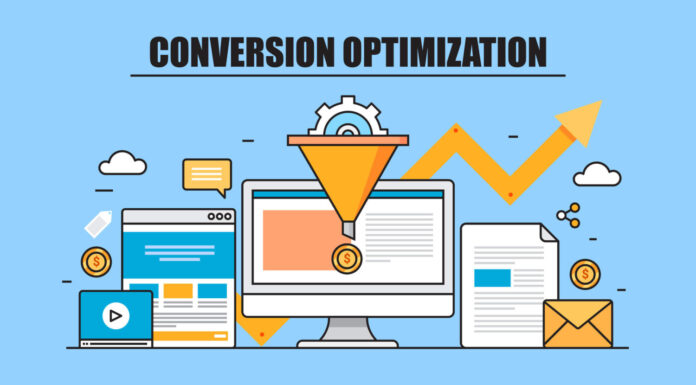When developing an integrated marketing plan for your brand, the significance of web design cannot be overstated. Web design has evolved beyond mere functionality and visibility—it now revolves around the intricate details that shape user engagement with your brand. Every aspect, from the layout to the color scheme, collaborates harmoniously to create a digital tool that, when strategically employed, can greatly enhance online marketing campaigns.
It is evident that a high-quality brand website is now a crucial element of any successful digital marketing strategy, and consumer expectations for web design have reached new heights. Regardless of the industry, a website that is informative, visually appealing, and up-to-date cultivates trust with potential clients. Consequently, it can profoundly influence customer acquisition and conversion rates.
Web Design Tips for Marketing Your Brand

In the current landscape, digital marketing holds greater importance than ever before. With a good Web Design Company, a meticulously crafted website can yield numerous tangible benefits for a business, such as increased sales and leads.
A remarkable website functions as an ongoing campaign, consistently supporting the brand. Most importantly, a website is easily measurable, providing brands with valuable insights into consumer behavior and helping them discern what works and what does not. However, how can a company achieve such a website? Here is how:
Unique Web Design

Setting yourself apart from competitors is crucial. An outdated and cumbersome website is likely to result in high bounce rates. While it may be tempting to use a template and simply insert your business information, the process is not as straightforward. A bespoke website that incorporates storytelling and visually aligns with your brand leaves a lasting impression on both the market and the consumer.
Your website should reflect your brand identity through color schemes, typography, and overall visual style. Use your brand logo prominently and consistently across your website to create brand recognition. Use high-resolution images, videos, and graphics that are relevant to your brand and convey your message effectively. Visual content can capture attention, evoke emotions, and enhance the overall user experience. Make it easy for visitors to navigate through your website. Use clear and descriptive navigation labels and organize your content into logical categories. Implement a search function to help users find specific information quickly.
Ensure your website is mobile-friendly and responsive to different screen sizes. With the increasing number of users accessing the internet via mobile devices, a responsive design is essential for providing a seamless user experience. Optimize your website’s loading speed to ensure visitors don’t abandon your site due to slow performance. Compress images, minify code, and leverage browser caching to improve load times.
Enhanced User Experience

A well-crafted website creates a captivating journey for users, encouraging them to engage, explore, and interact with your brand. Establishing meaningful initial impressions—from the brand to the consumer—directly impacts your bottom line and overall objectives.
Investing in user experience has become essential for brands, as users expect an authentic and intuitive website that reflects your brand’s vision, perspective, and level of service. Ensure an optimal user experience through strategic plans such as user testing and A/B testing, which play a critical role in determining the website’s success. Additionally, consider optimizing your website for search engines to boost your app’s visibility, as a well-ranked website can drive more organic traffic and increase your online presence.
Search Engine Optimization (SEO)

SEO is employed to ensure that a website appears in search engine results in chronological order based on user engagement. Implementing good SEO practices involves linking your website with relevant keywords that align with your target market’s search queries. Incorporating SEO into website design is of utmost importance to facilitate proper user interaction.
To achieve the best SEO results, it is essential to research which links and keywords should be integrated into your website. Continuously updating these links to remain relevant and proactively positioning content to enhance visibility in search results are key aspects of effective SEO practices.
Use web analytics tools like Google Analytics to track user behavior on your website. Analyze the data to identify areas for improvement and optimize your website’s performance, user flow, and conversion rates.
Establishing Brand Influence

Building a consistent relationship with customers and users fosters brand influence, leading to brand loyalty. True brand loyalty and trust go beyond merely being loyal to the products; they stem from nurturing ongoing connections with your consumer base.
Numerous factors contribute to brand influence, and digital marketing increasingly facilitates these connections through a digital ecosystem. Brand influence plays a vital role in brand-building, particularly when targeting millennials and Gen Z. These generations seek brands they can relate to and feel proud to associate with.
Establish a consistent brand voice that reflects your brand’s personality and values. Use this voice in your website copy, blog posts, and any other communication. Whether it’s conversational, professional, or playful, maintaining a consistent brand voice helps build familiarity and brand influence.
Display customer testimonials or positive reviews prominently on your website. Social proof can significantly impact purchase decisions, so highlight feedback that showcases the value and credibility of your brand.
Optimizing Conversions

Monitoring conversion rates is crucial for assessing a website’s performance and delivering an exceptional customer experience (CX). The conversion rate directly reflects how users engage with the website, making it a vital factor in shaping marketing decisions.
Strategic web design helps users find the information they need through well-placed call-to-action straightforward navigation. That way, they can easily make their decision to buy from your website.
Place clear and enticing CTAs strategically throughout your website. Whether it’s “Buy Now,” “Sign Up,” or “Learn More,” CTAs should be visually prominent and stand out from the rest of the content to encourage user interaction.
Final Thoughts
Recognizing that an increasing number of consumers engage with brands online before making a purchase, it is evident that an integrated website marketing strategy is essential for effectively reaching and converting leads both online and offline. With a strong digital foundation, anchored by a well-planned website, a company can harness a positive brand image to drive sales, establish public relations, cultivate a robust social media presence, and execute comprehensive marketing campaigns across all media channels.





![Calgary’s Hottest Neighborhoods for Luxury Homebuyers [2024]](https://thewashingtonote.com/wp-content/uploads/2024/04/Calgary-324x160.png)



